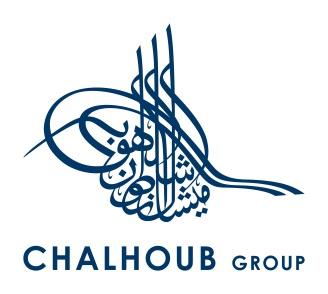
According to a new report by the Dubai-based luxury retailer Chalhoub Group, affluent nationals in the Middle East spend around $2,400 in beauty, fashion and gifting, with 42% refreshing their wardrobe up to twice a month with the latest and greatest luxury trends. The group has released the report following recent ONS figures that reveal that visitors from the Middle East rank top for tourism spend per person in the UK in 2013. The report aims to offer insights into luxury consumer behaviour to aid luxury brands from the UK. The research reveals key insights into the latest, trends and changes in lifestyle that is shaping the luxury landscape overseas.
“We are keen to share our insights into the close relationship between lifestyle, luxury and consumption in order to assist and support brands, helping them connect with their customers in the Middle East region. The report clearly shows that in order to be able to keep up with the habits of luxury Gulf consumers and anticipate their aspirations, luxury brands will have to tap into the societal fabric which sets the path for a very specific consumption journey as well as innovating in product design,” says Patrick Chalhoub, co-CEO Chalhoub Group.
As a leading partner for luxury in the region, the Chalhoub Group has produced the paper using proprietary research undertaken by the group’s strategy & innovation unit that provide useful insights about the consumer’s approach to luxury and the shifting trends that will shape the future of the sector. The paper utilises research from more than 1,500 consumers as well as insights from luxury partners such as Christian Dior, Michael Kors and Fendi and Baccarat. Some of the key findings from the report include:
· There are three deep-rooted consumption trends, all present among affluent Gulf nationals but to varying degrees: the quest for indulgence, the need for recognition and the longing for bonds.
· The region’s quest for indulgence is sustained by high levels of spending. The monthly average spend among affluent nationals on beauty, fashion and gifts is $2,400. It is not only the volume spent on luxury that’s high but also the frequency. On average 42% of GCC luxury consumers splurge on luxury clothes on a one-to-two month basis, 41% on luxury shoes and 37% on luxury bags every two-to-three months. On average 78% of GCC affluent consumers say they like to keep up with the latest trends, with 76% of them converting this desire into consumption by claiming to like to have the latest in everything they own. The activity of shopping as a means to instantaneous escapism should not be underestimated in the Gulf region. 63% of Riyadh nationals claim to shop for clothes ‘whenever they need to feel better’ and 74% of GCC nationals buy something they like, even if they have not planned for it, making impulsive shopping standard behaviour.
· The need for recognition is embedded in a powerful need for self-affirmation. Choice of style is a tool not only for asserting individuality but also in establishing identity: 77% of GCC nationals like to create their own style, 74% claim it is important to stand out and be noticed. Self-affirmation is driven by a duality of desires. Alongside originality, acceptability is a parallel driver. 83% of GCC nationals feel it is important to be accepted. Iconic branding allows for visible self-affirmation and direct expression of one’s social standing. 82% of Gulf nationals want their gifts to impress, thereby enhancing the image of the giver.
· Integral to the relationship between GCC consumers and luxury brands is trust. Another key to this intricate desire for bonds is found in a consumer’s immediate circle. The biggest influencers in a Gulf consumer’s life are to be found within a small intimate circle of personal relationships: 71% claim the biggest influencers in life are siblings and friends, closely followed by spouse and mother. This powerful bond transfers into the arena of luxury: 79% rank friends as their biggest influencers on luxury purchases. In a highly connected society, the desire to bond with one’s close network of personal relationships extends into the virtual sphere. Social networking naturally leads the way, with over 90% of affluent GCC national internet users having regular access to social networking sites such as Facebook, Twitter and YouTube. Decision-making in the real world is strongly navigated by these virtual ties.
Notifications